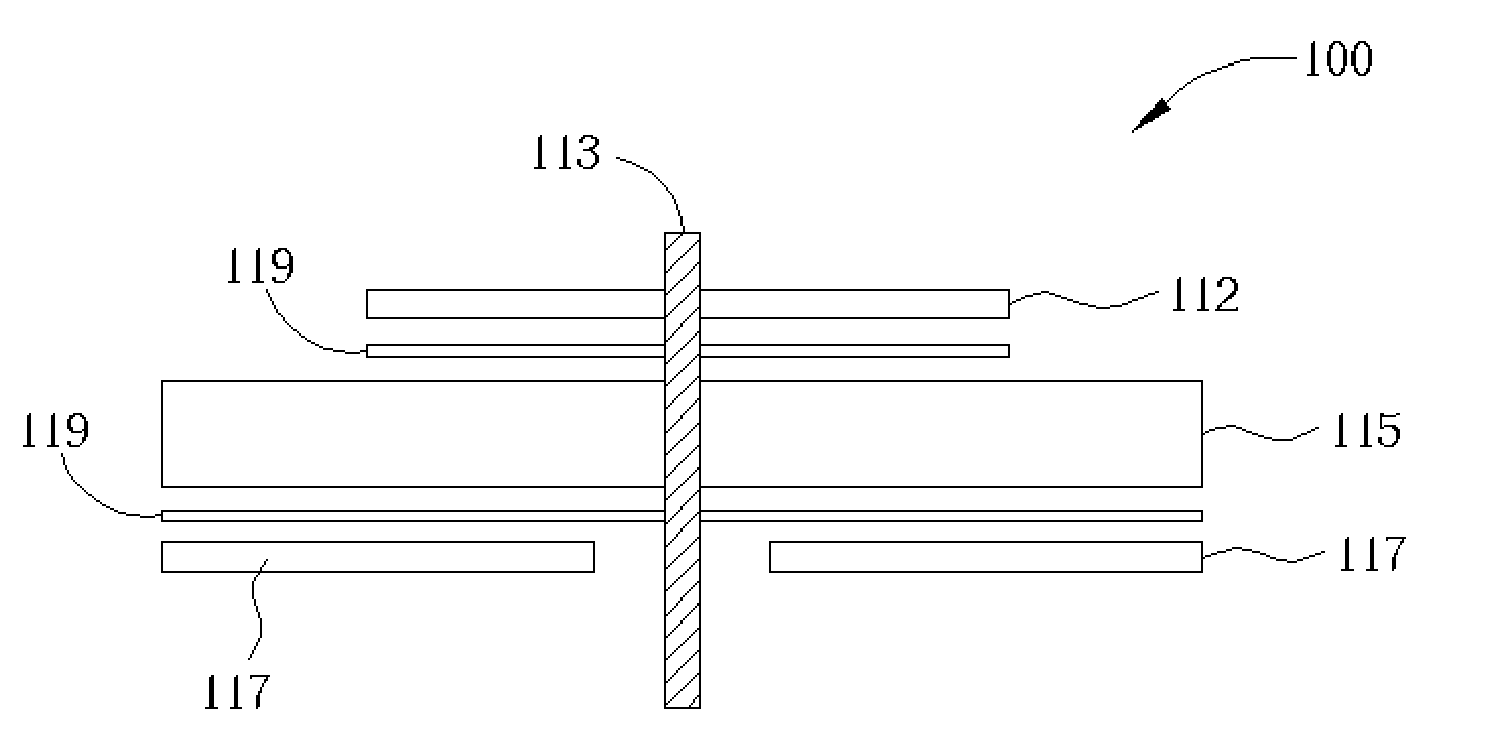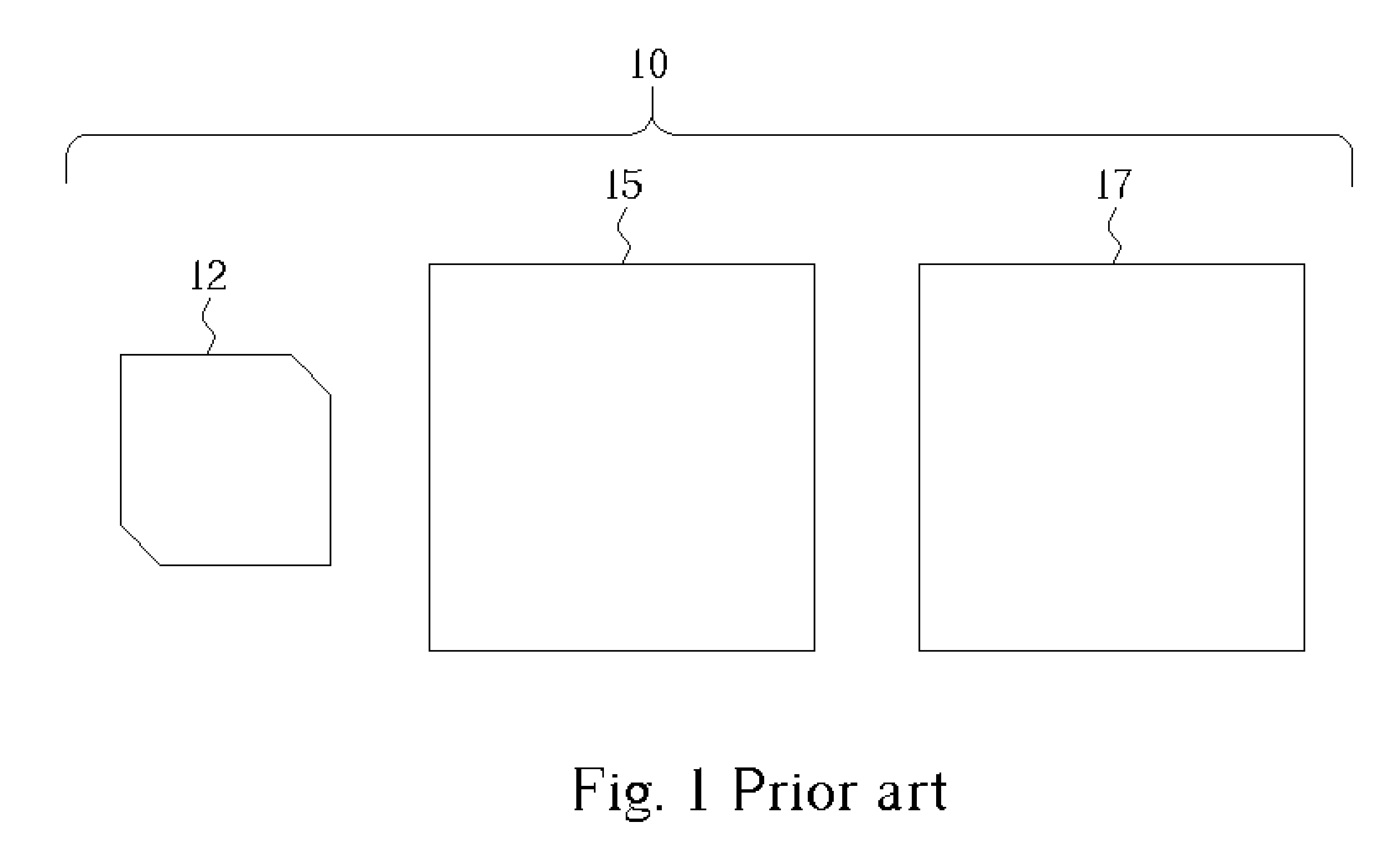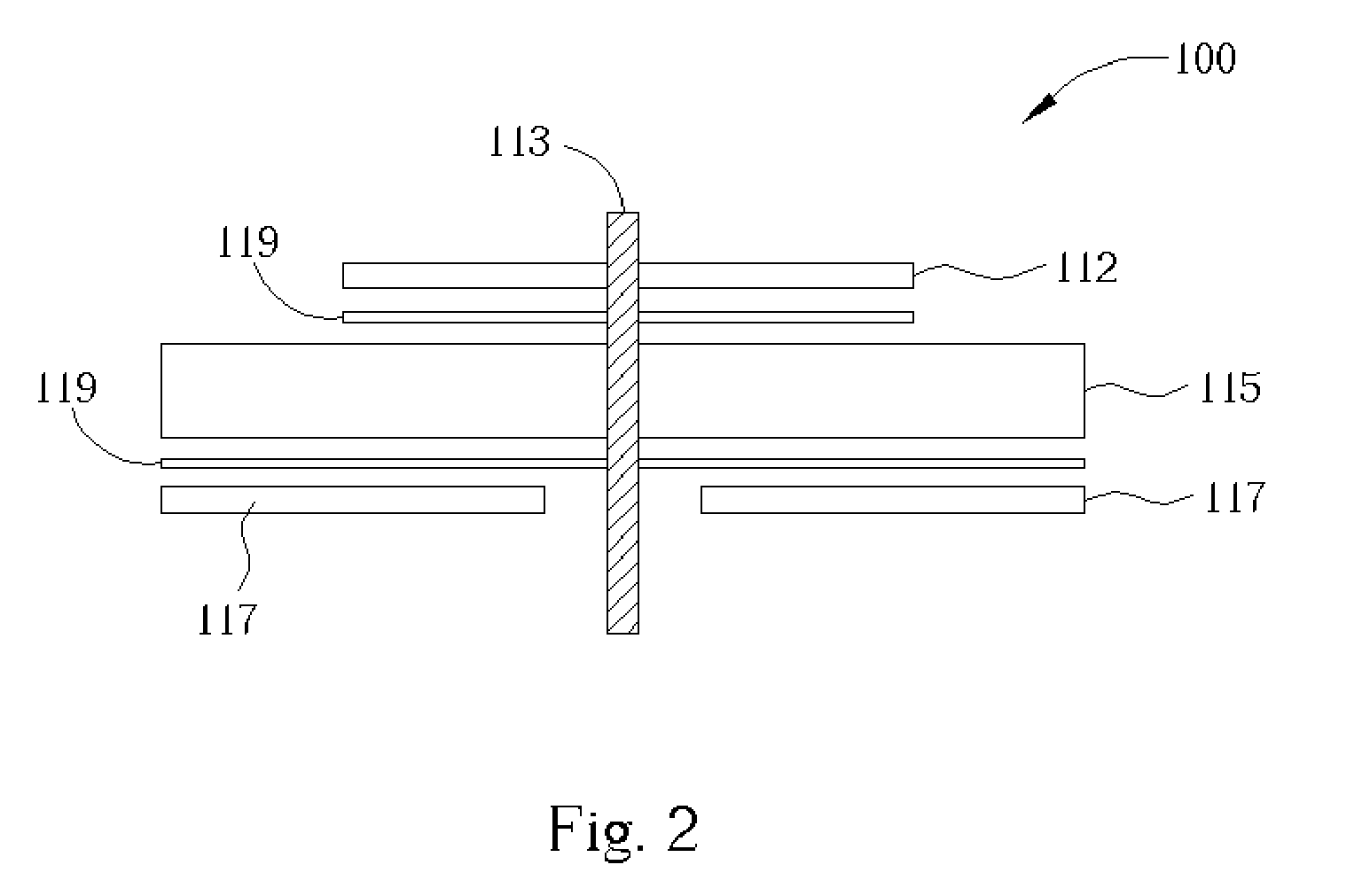Patch Antenna Utilizing a Polymer Dielectric Layer
a polymer and dielectric layer technology, applied in the field of antennas, can solve the problems of not desirable, dielectric constant of the dielectric layer directly affecting the dimensions of the distributed circuit components, and downside of a markedly increased cost, so as to improve the adhesion of the dielectric layer, reduce the cost, and the effect of reasonable siz
- Summary
- Abstract
- Description
- Claims
- Application Information
AI Technical Summary
Benefits of technology
Problems solved by technology
Method used
Image
Examples
Embodiment Construction
[0020] A patch antenna 100 according to the present invention comprises a radiating element 112, a ground plate 117, and a dielectric layer 115 sandwiched between the radiating element 112 and the ground plate 117 as shown in FIGS. 2-4.
[0021] The radiating element 112 preferably comprises a flat metallic plate, sheet, or layer somewhat rectangular in shape. As is known in the art, it is possible to improve gain by altering the shape of the radiating element 112 and / or other elements of the antenna 100 and as such, the scope of the present invention is not intended to be limited to any specific shape of any of the antenna's components.
[0022] The ground plate 117 also preferably comprises a somewhat rectangular, flat metallic plate, sheet, or layer and is located so that planes formed by the radiating element 112 and the ground plate 117 are approximately parallel and overlapping as shown in FIGS. 2-4. The ground plate 117 may be attached to a printed circuit board or other substrat...
PUM
| Property | Measurement | Unit |
|---|---|---|
| Dielectric polarization enthalpy | aaaaa | aaaaa |
| Adhesivity | aaaaa | aaaaa |
| Plasticity | aaaaa | aaaaa |
Abstract
Description
Claims
Application Information
 Login to View More
Login to View More - R&D
- Intellectual Property
- Life Sciences
- Materials
- Tech Scout
- Unparalleled Data Quality
- Higher Quality Content
- 60% Fewer Hallucinations
Browse by: Latest US Patents, China's latest patents, Technical Efficacy Thesaurus, Application Domain, Technology Topic, Popular Technical Reports.
© 2025 PatSnap. All rights reserved.Legal|Privacy policy|Modern Slavery Act Transparency Statement|Sitemap|About US| Contact US: help@patsnap.com



